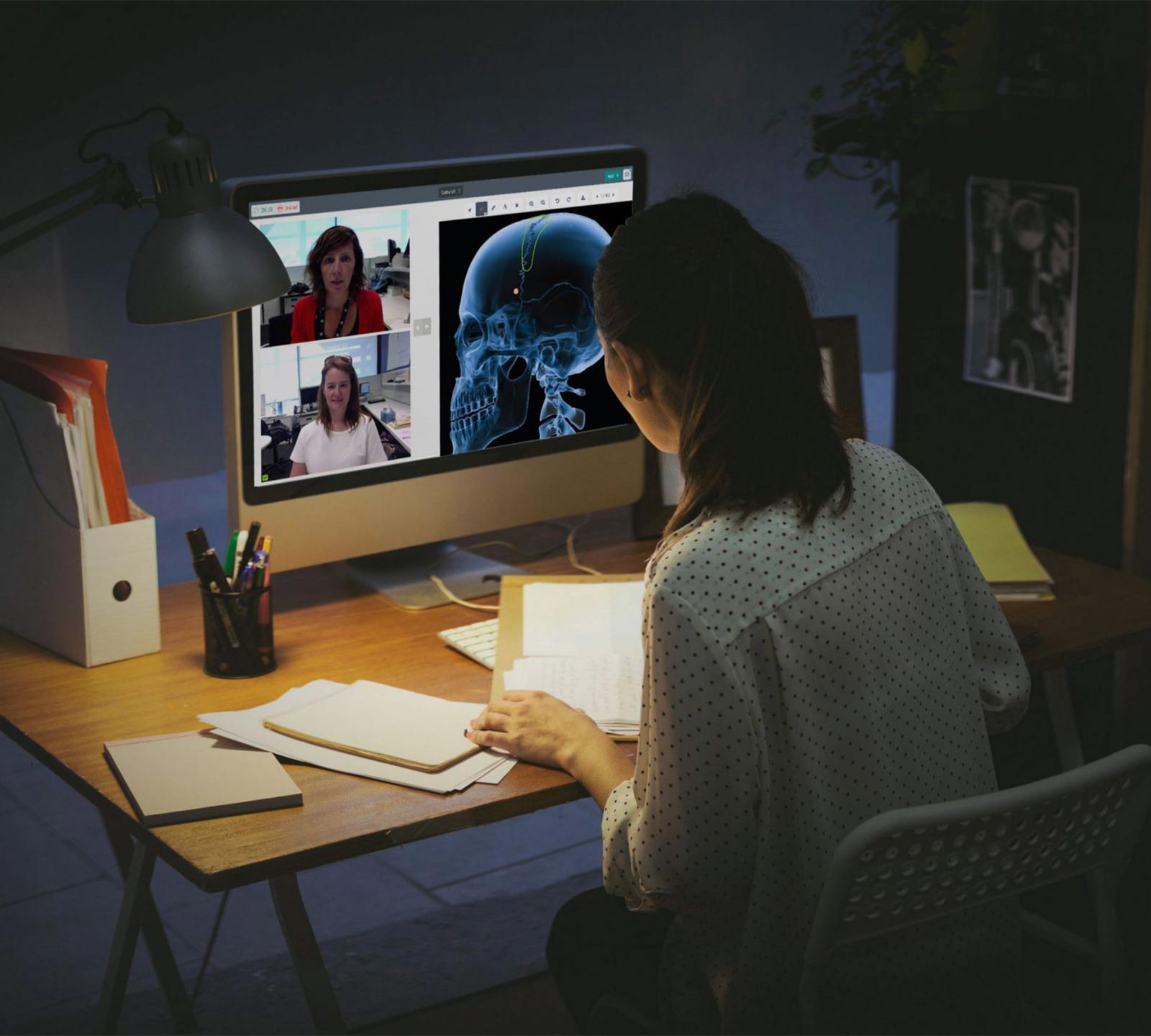Researcher and health educator Associate Professor Jane Frost is known for her innovative approach to technology.
From her use of Microsoft’s HoloLens to show nursing and pharmacy students the layout of muscles and blood vessels beneath human skin, to adopting extraordinarily life-like masks to simulate patients, this educator has always embraced tech.
Jane recently graduated from the first cohort of students completing a digital health micro-credentialled course sponsored by Digital Health CRC and co-delivered with RMIT online.
Jane says she realised that the content of the Digital Health Strategy and Change course fitted with her interest in leadership and change management in digital health, while exploring the new sphere of micro-credentialled learning.
“Digital health is an emerging area that is really important for all healthcare professionals to start to understand,” she says.
The courses were developed in partnership with Queensland Health, Canteen, Telstra Health and RMIT’s Health Transformation Lab to address skills shortages in digital health, change management and patient care.
Bringing technology into the health classroom
Jane uses augmented reality in her teaching, with Hololens headsets that allow students to work with a hologram patient, a three-dimensional image appearing in their environment.
“Using anatomy and physiology applications developed for the Hololens, students can see an image of a body with the layers of skin peeled off. This lets them identify the correct muscle beneath a site where they might give an injection while avoiding nerves and blood vessels, or see how a person’s positioning affects their breathing.”
Other education technology used at the University of Canberra’s nursing school includes Jane’s not-so-secret alter-ego Marjorie, an 81-year old patient created using life-like silicon masks, to teach students how to interact with patients.
Jane is known as an innovator in health education, but even so, she says she learned an enormous amount during the six-week micro-credentialled digital health course.
“I realised how much I didn’t know about digital health, and how the concept of digital health and many of the areas that it encompasses, hadn’t really been on my radar,” she says.
“Through my work with virtual reality platforms and simulations, I thought I had a decent level of knowledge around digital health, but I hadn’t realised how broad the scope was – and the influence of things like wearables, web platforms and mobile health apps,” she says.
Why Marjorie’s getting a wearable
The course reflects the wider implications of various digital health applications, and highlights areas health professionals needed to consider, she says.
“For example – there’s lots of weight loss apps around, I’ve downloaded a few myself without considering where my data was going before, and noticed I received more ads about weight loss products,” she says.
“I would be less likely to encourage patients to download applications now that I understand that the data could be used by a third party.”
Jane says that the course made her realise the important role that digital plays in health in the wider community.
“It has also opened my eyes to how much we don’t currently teach our students about digital health, and that we need to cover it in undergraduate programs as well as postgraduate programs.”
Through the micro-credentialed course, Jane has gained some expertise to add to her already-broad portfolio, and her influence in developing future curricula for tomorrow’s health professionals means the course will have a ripple effect.
“I think Marjorie might be getting a wearable, and start doing telehealth now,” she says.


